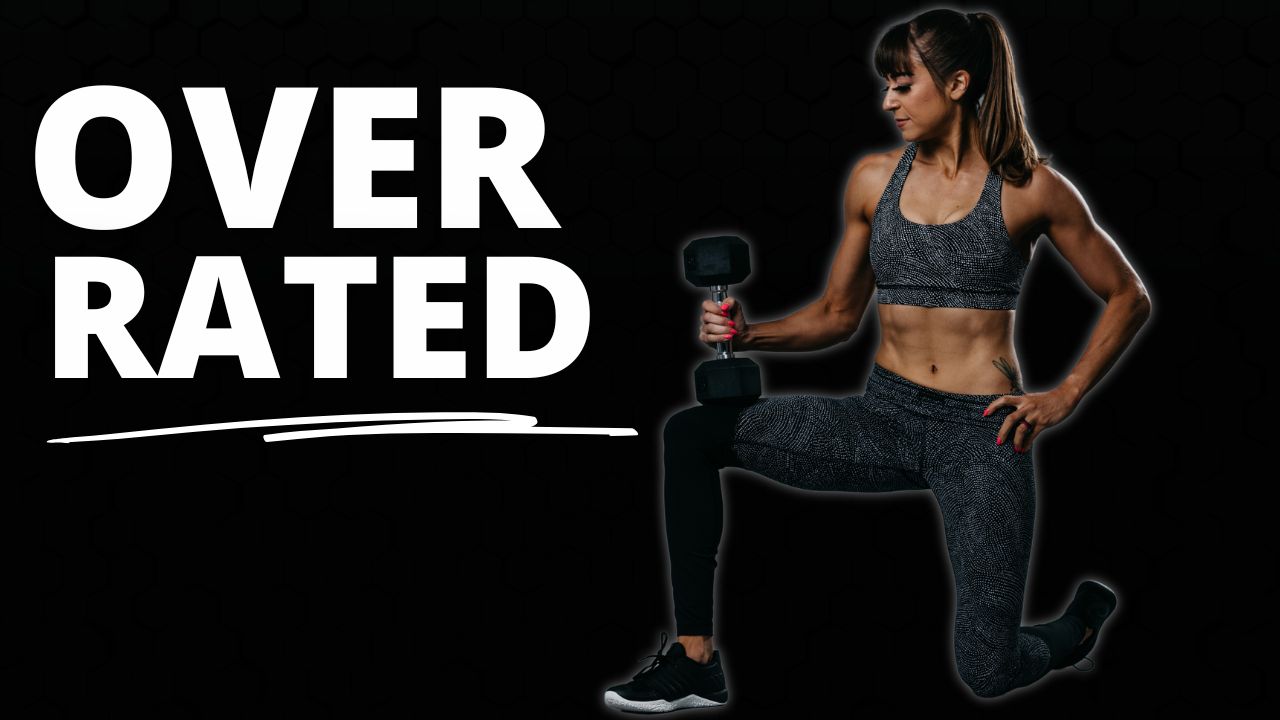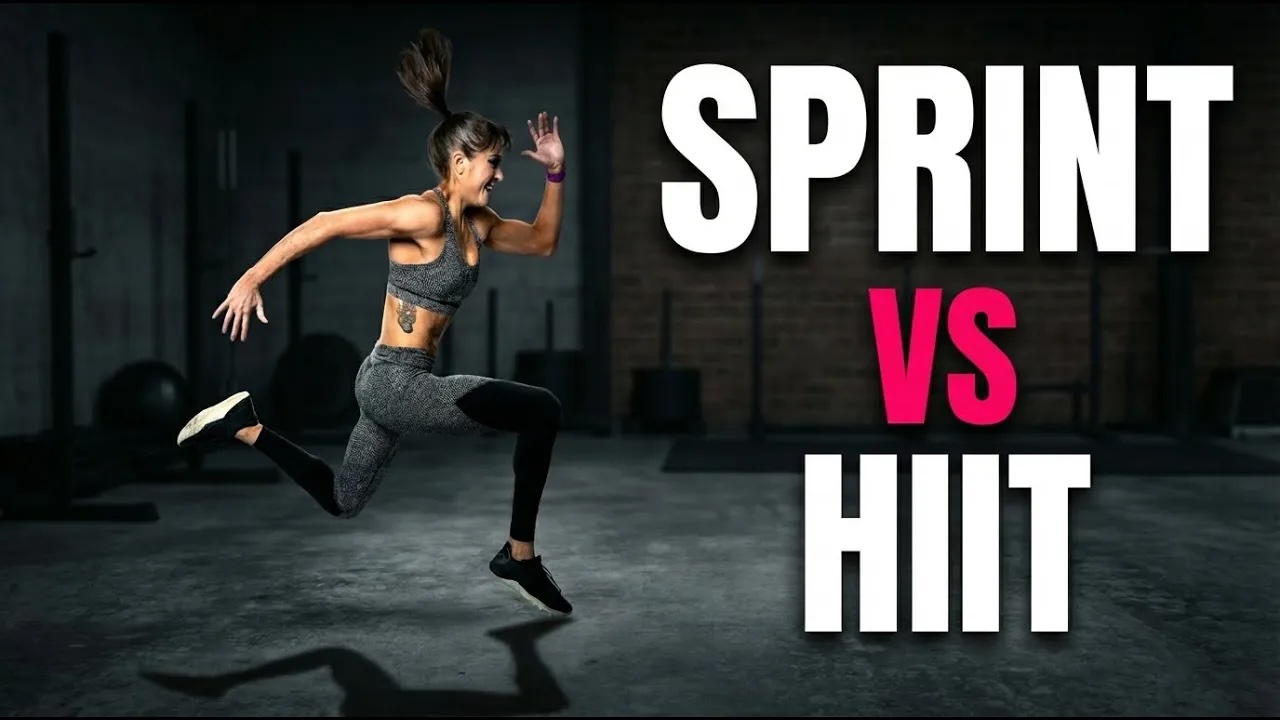The Bulgarian Split Squat or Balance Lunge is a move you see all over social media. It’s even a staple in many standard gym training routines. Many say it is a “must-do” exercise or the “best” unilateral leg moves.
But honestly, it’s slightly overrated BECAUSE it is so often done INCORRECTLY.
It’s a move that’s far more advanced than we realize and many of us haven’t earned the variation we’re using.
So we don’t see the full benefit of the exercise. And even end up injured from it.
We wobble around and let our front knee cave in. We don’t lower down to the ground using the full range of motion. We rush through as we lose our balance.
Our training should feel hard with purpose. We want every move to truly pay off and yield the best results as fast as possible.
That’s why I wanted to share my favorite static lunge variation to start with and even variations of the Balance Lunge you may use instead.
But before I do I wanted to share 3 key form tips if you are using the Balance Lunge to make sure you’re getting the most out of the exercise!

#1: Set up at the BOTTOM of the lunge.
By setting up at the bottom of the lunge, you can make sure your feet are not only in the right position but also make sure you are truly able to work through a full range of motion.
Because the value in doing the Balance Lunges is in the range of motion. You’re increasing the range of motion to create more of a challenge and progress the exercise.
This increased range of motion puts muscles under greater stretch while loaded to help you see better muscle and strength gains.
It also helps you maintain a bigger range of hip motion. So if you’ve been doing that mobility work, you need to make sure you’re doing moves to fully strengthen through the range of motion you built.
Too often when we do Balance Lunges we aren’t actually going through the full range of motion completely defeating part of the purpose of using them in the first place!
We also aren’t stable in our set up because our feet are at odd widths. This set up at the bottom, allows you to focus on pushing the ground away and set up at a stance you can control.
You can choose to flex or relax your back foot based on your toe and ankle mobility. But make sure you’re creating that tension down into the bench or box either way to stabilize.
While more load will be on that front leg, you want tension through your back foot to balance as you focus on your front foot pushing down into the ground like a tripod with two points in the ball of your foot and one in your heel!
This helps you truly activate the muscles of your leg and even helps with knee alignment so that it isn’t caving in!
#2: Use torso and shin angle to your advantage.
We think of form as this very set binary thing – good or bad. But with so many moves, there are tweaks to form you can use to emphasize the muscles you want to work and even better suit your unique build.
With the Balance Lunge, you can change your shin angle and torso angle to help you emphasize more quad or more glute.
You can also use these two things based on ankle mobility and knee issues to work around aches and pains.
A more vertical shin angle will help you emphasize your glutes especially when combined with a slight more hip hinge or a slight lean to your torso.
Allowing your knee to move a bit more forward over the all of your foot while maintaining a more vertical torso position will emphasize your quads more.
Which you use will be based on your goals for the exercise. Everything should be included with purpose.
Also you may find that previous knee injuries or even ankle mobility issues impact the postures you use.
If you have issues with knee pain or ankle mobility, even due to previous ankle sprains, you may find you need to use a bit more of a vertical shin angle although you can play around with torso angle a bit.
#3: Adjust your depth!
The higher the bench or box you use, the harder this lunge is, creating more instability and a bigger range of motion. You need to be more mobile and stronger as you increase the range of motion you’re working through.
This makes changing the height of the box or bench a great way to progress this move potentially without adding weights. But it also means the height of the bench is something you need to EARN.
Yet so often we just think Balance Lunge and we just go to any bench around instead of finding one that fits our needs and fitness level.
Don’t be afraid to adjust the height based on your mobility and height. Also don’t be afraid to adjust the height to progress the movement without adding loads.
And if you do want to focus on lifting more, don’t be afraid to even go LOWER than you have in the past to progress and add instability while going heavier. There are so many ways to create progression through how we combine range of motion, stability and resistance!
The importance of the height of the box or bench we are using is too often not appreciated and recognized, which is why I feel so often this lunge is overrated and misused.
Because if you don’t work through the range of motion you’re creating, you’re better off doing a different lunge variation instead and really learning to control it with loads.
Results come from quality of movement.
That’s why I love to start with the Split Squat and even return to this move to focus more on progression through adding heavier and heavier loads while maintaining mobility.
Because lunges are a great mobility and stability exercise for our hips especially when included at the level and in the variation that matches our fitness level, needs and goals.
The split squat is the most basic static lunge variation. But instead of your back foot up on a bench or box, you’re doing this move fully off the ground.
If you can’t yet lower your back knee to touch the ground, or hover right above it, you haven’t earned increasing the range of motion further.
If you aren’t yet able to go to the ground, you can also reduce the range of motion you’re working through to build up.
You can place a block under your back knee and lower to that over going all of the way to the ground. This is a great way to slowly build up that range of motion and hip mobility and leg strength but in a way you can control.
With this split squat, I love to set up at the bottom and focus on maintaining that even pressure between both your foot and back foot, whether you’re doing it off the ground or from the block. This push down into the ground to help you drive up centered is key to helping you balance and really engage your legs.
And like the Balance Lunge, you can adjust torso and shin angle to impact what muscles you activate more.
You can add load to this move as you can control that full range of motion.
And this is where there is extra opportunity in the options and variations of the split squat that you can even use to tweak the balance lunge to fit your needs.
With adding resistance, it isn’t just about going directly heavier all of the time.
You can change where you hold the weights from down at your sides to allow yourself to focus on your legs and grip and go heavier to up at your chest in the goblet position to target your core more.
You can even unilaterally load the weight and hold it on one side to work on core stability. Even holding a weight in the opposite hand from your front leg can help you target your glute medius more especially with that torso lean and vertical shin angle.
You can even change how you’re applying resistance by using a mini band over dumbbells.
The key is understanding there are options to really make this move fit your needs and goals.
And with the Balance Lunge, we so often only increase range of motion by placing our back foot up.
However, you can also progress the basic split squat by raising your FRONT foot up as a deficit split squat.
Even if you love the Balance Lunge and can work through that full range of motion, you may include this to emphasize different muscles and even create progression through the same but different.
Just like you return to the split squat to go heavier while having the more limited range of motion.
With the Deficit Split Squat, some may find this easier to control while getting the benefits of working through a bigger range of motion.
And a very small elevation can have a huge impact. It may even feel better for some with longer femurs or upper legs.
The deficit split squat can keep that front leg in more of a working range of motion and put the glute under greater stretch in that front leg. And unlike the Balance Lunge, you won’t have more of your weight in that front leg, making it potentially easier to balance with full pressure between both legs and feet.
So as you build up and progress, see opportunity in the options. But don’t just include a move to use it because someone said it was the “best” or a “must-do.”
Make sure every move you use has purpose and that you can use it for quality reps!
Want amazing workouts to challenge you and help you build your leanest, strongest body ever?
Check out my Dynamic Strength Program!



0 Comments